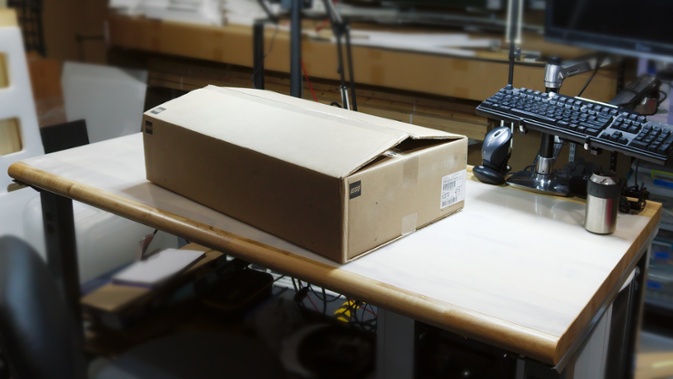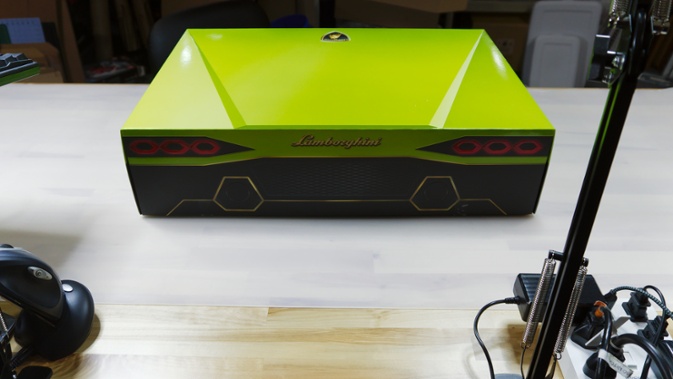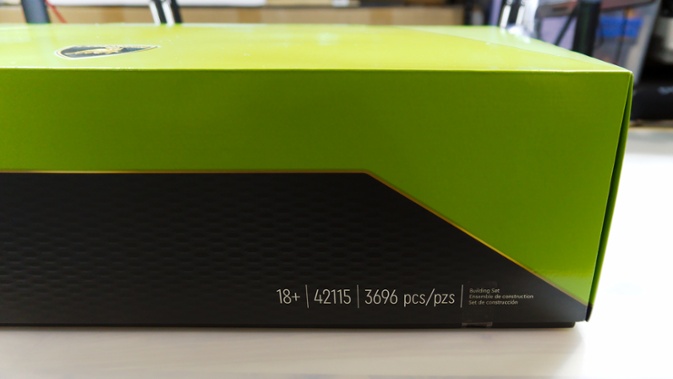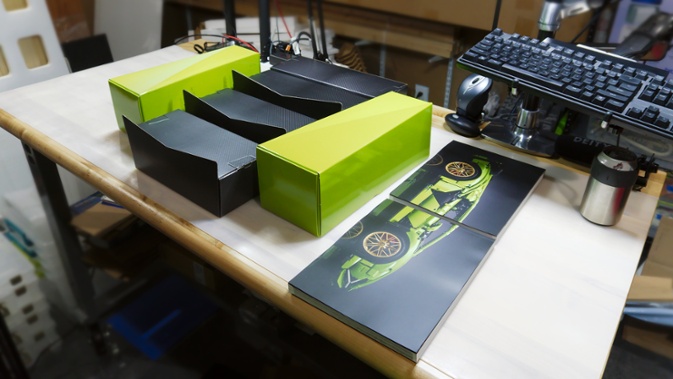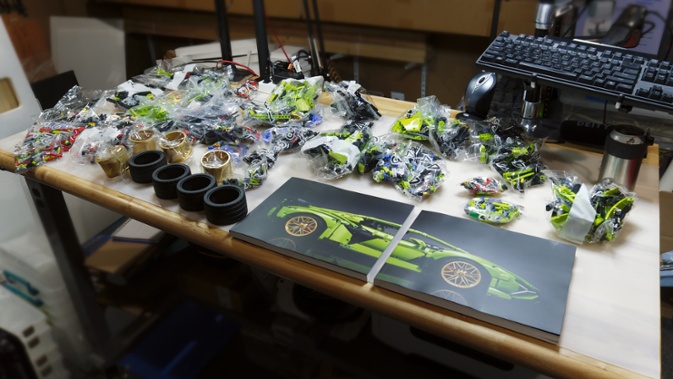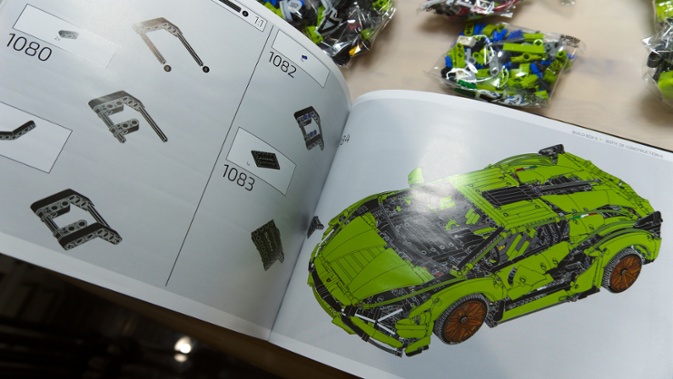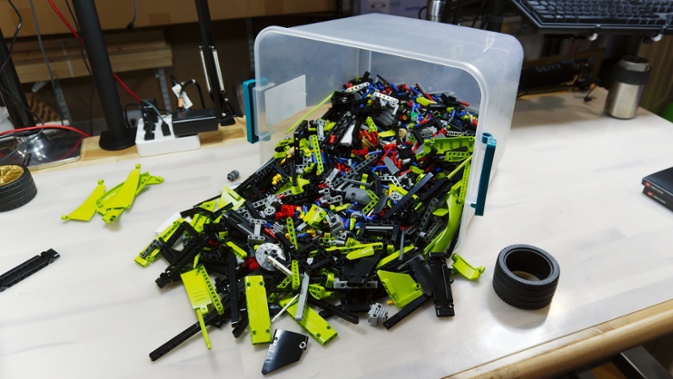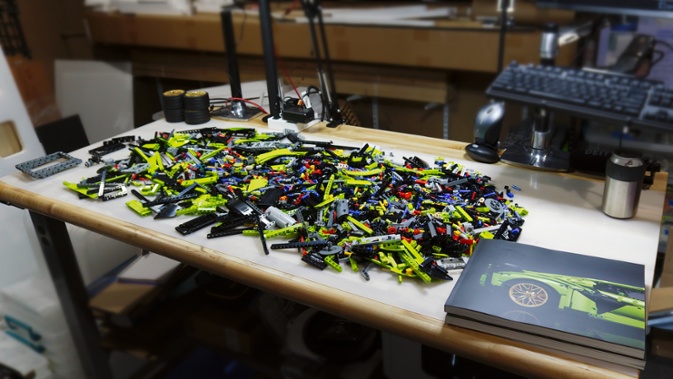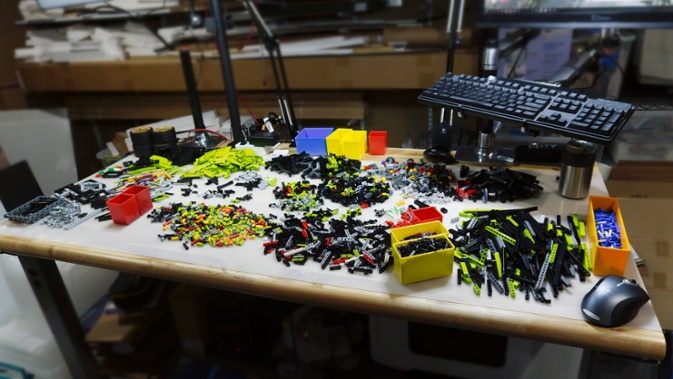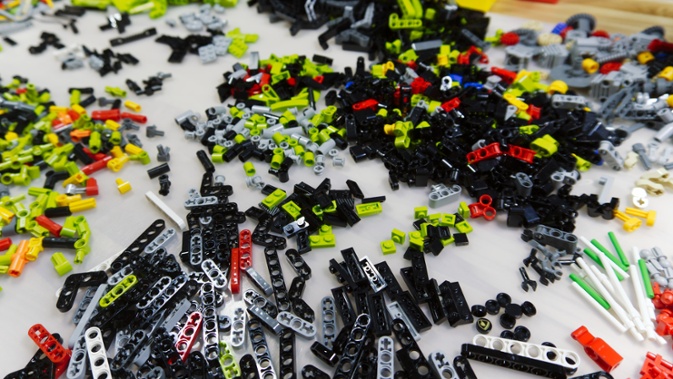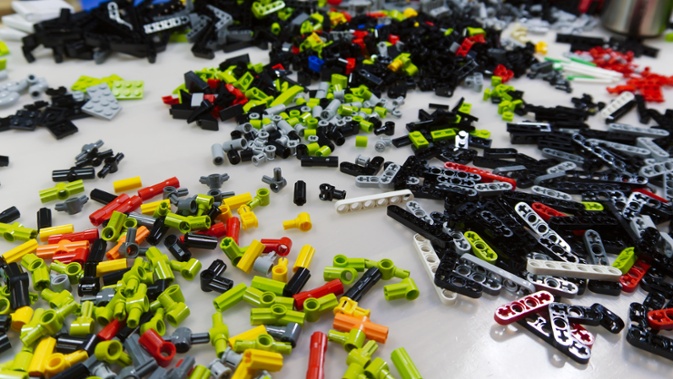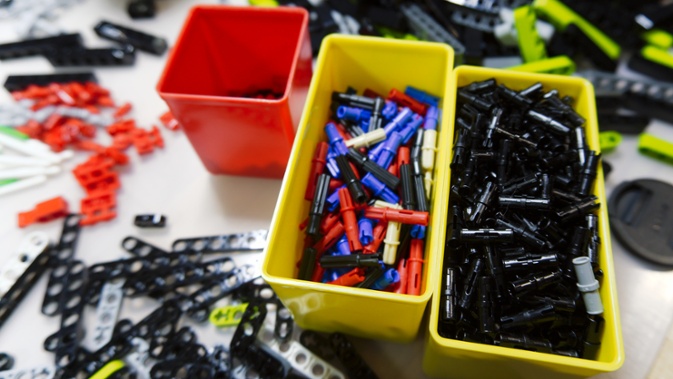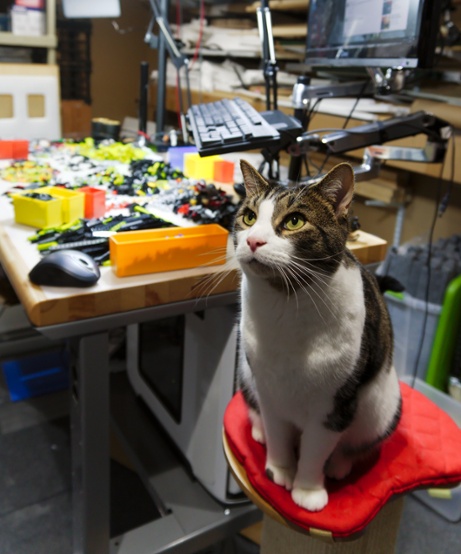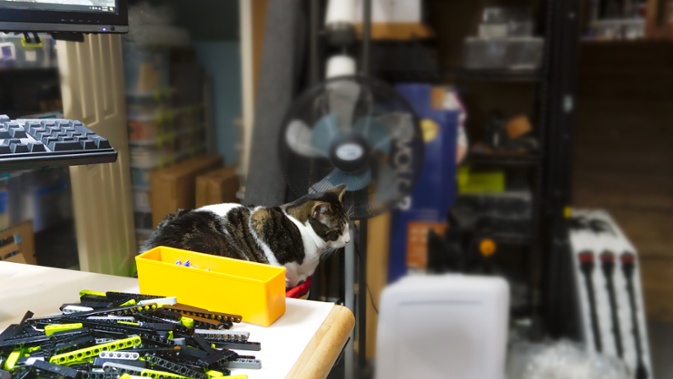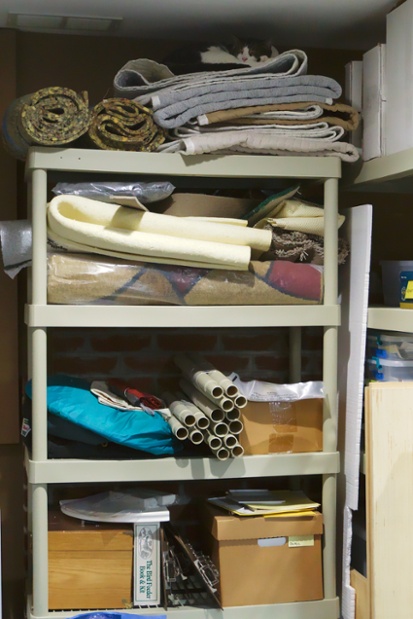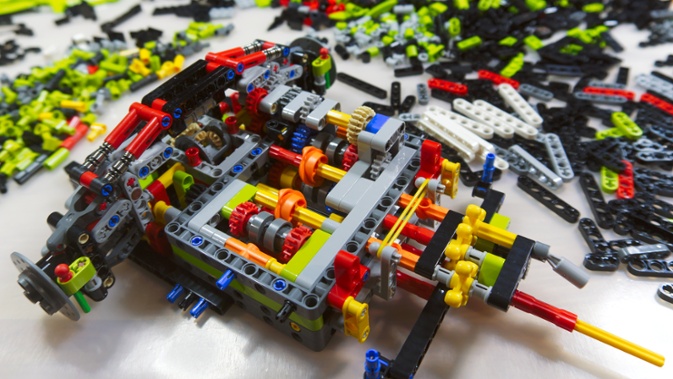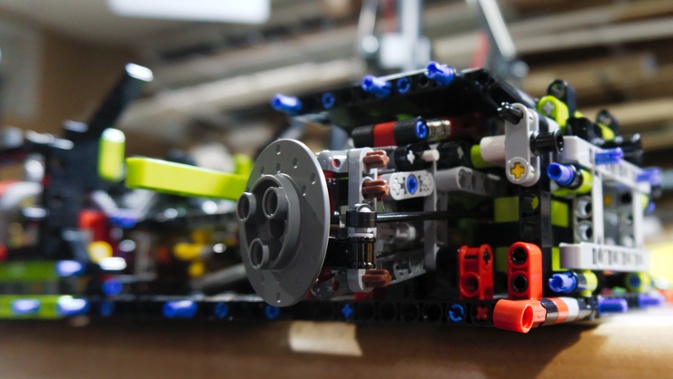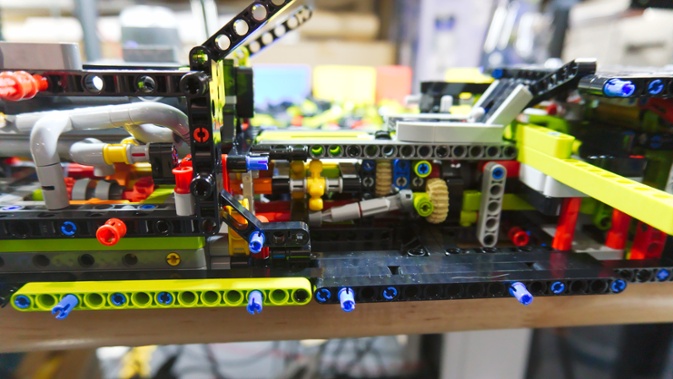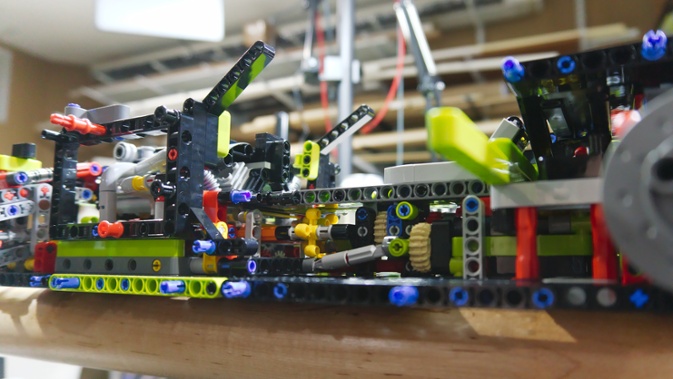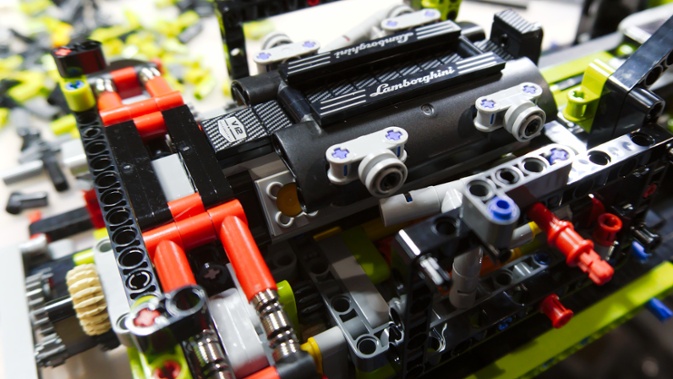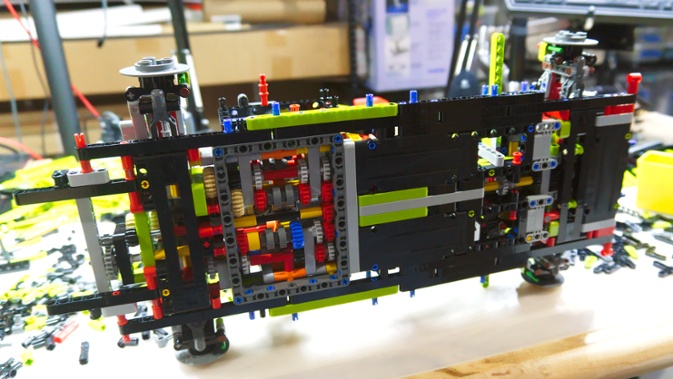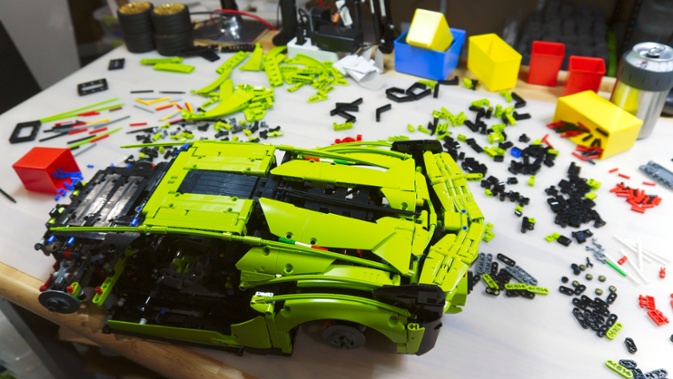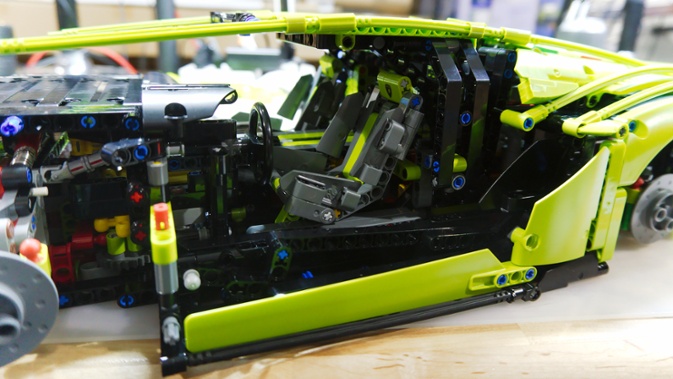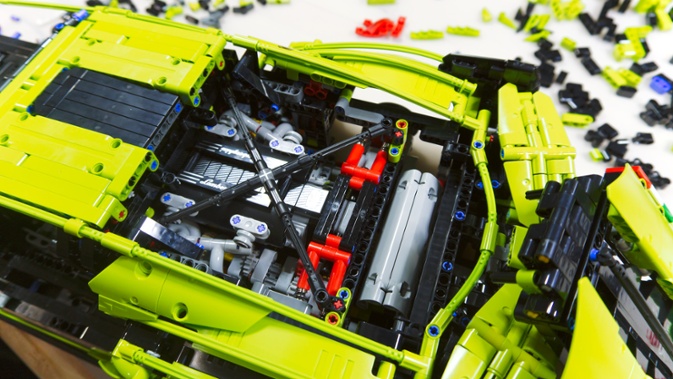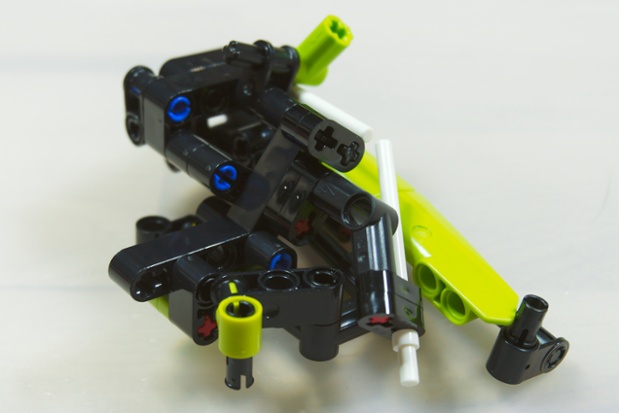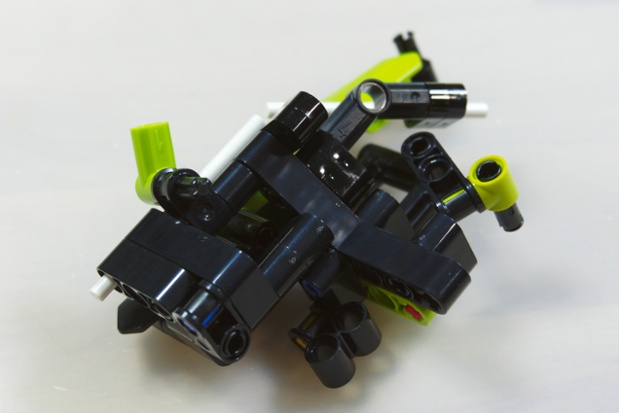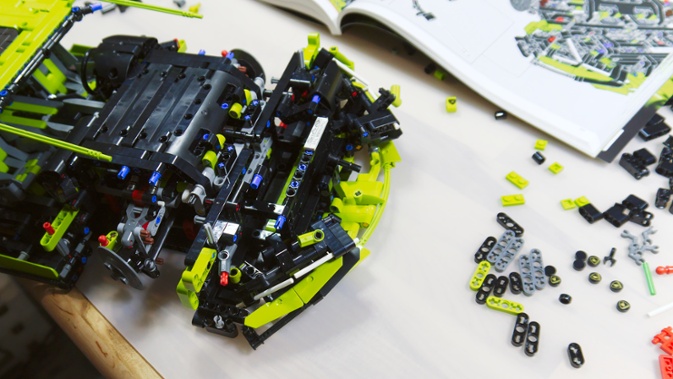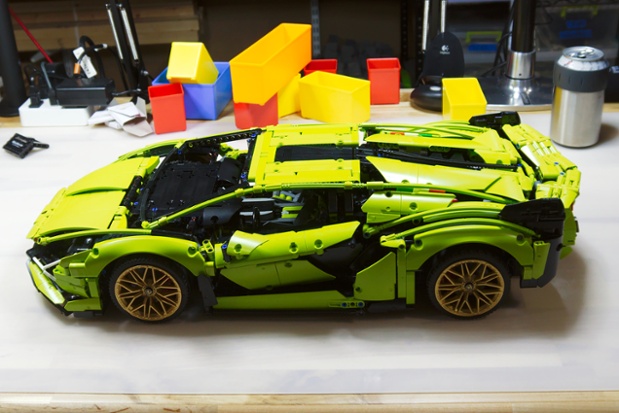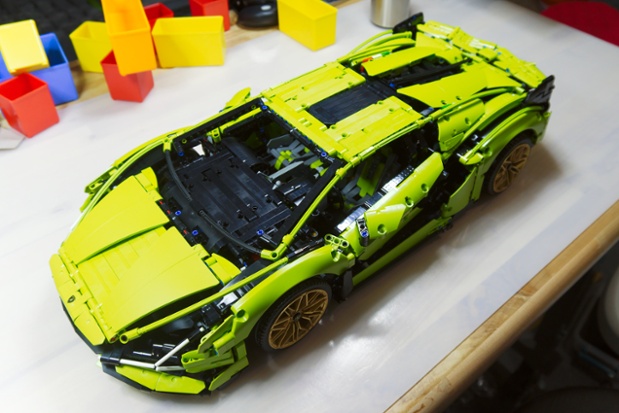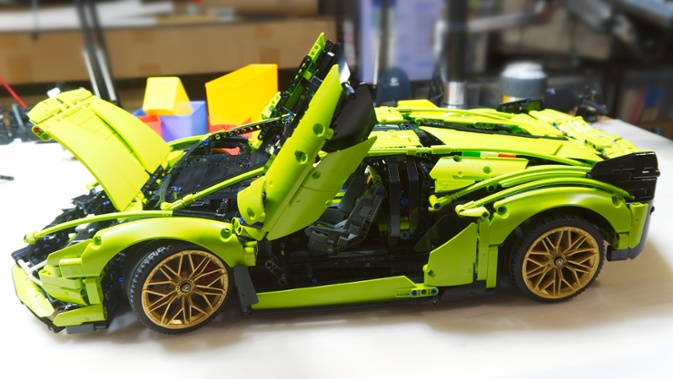Lego 42115 Lamborghini Sián
Decided to crack open and start on this big kit, then ended up doing the whole thing in one 19-hour binge.
Lego boxes can sometimes be kind of flimsy and this kit is fairly heavy, so thankfully it came double-boxed.
Internally there are yet more boxes dividing the kit into sections, and the build is segmented into several stages, with the parts separated into bags and numbered by the build stage. It takes two thick manuals and 1084 steps.
Hmm, numbered bags? That feels a bit like cheating. So first I tossed them all into a big container and gave it a good stir.
That’s more like it.
Then I got to spend a couple hours roughly sorting and separating everything by part type so I could find them when needed. The silicone mat I put on this table helps a lot with keeping small parts from sliding/rolling off the edge, so the only times I had to go searching for them on the floor was when I (or the cat) actually dropped them there.
These Technic sets are mostly held together by pins and shafts rather than traditional brick stacking. This isn’t even half the pins – out of 3696 parts, something like 1200 of them are just little pins like these.
The cat hung around during much of the build. Mostly he just sat on the cat stand I have next to the table for just this purpose.
He occasionally went off to do cat stuff or explore other parts of the basement, and found a way to a new (I think) spot on a high shelf where there’s a stack of moving blankets:
The rear drivetrain includes a differential, independent suspension, and a complicated sequential transmission.
There’s a similar suspension for the front wheels, and some linkages to steer them.
It’s an all-wheel-drive so there is also gearing going through the center of the vehicle to a front differential. There’s eventually a bunch of linkages so that paddle shifters in the cabin will operate the rear transmission, along with a center lever that operates another transmission to switch between forward/neutral/reverse.
The engine has 12 little moving cylinders, though by the time you’re done the engine blocks are covered and you can’t really see them.
A lot of the gears are visible underneath, though:
After the guts are all in place you do the rear body work. This is rougly 15-16 hours into it.
Some cabin detail. There’s also a switch in the passenger footwell that raises the rear wing.
The completed engine bay with the lid off:
Then you do the front body work. Along the way there’s a couple times where the instructions have you put together very strange-looking sub-assemblies such as this one, which ended up being a front corner:
And, done:
A day later my fingertips were still a bit numb.
